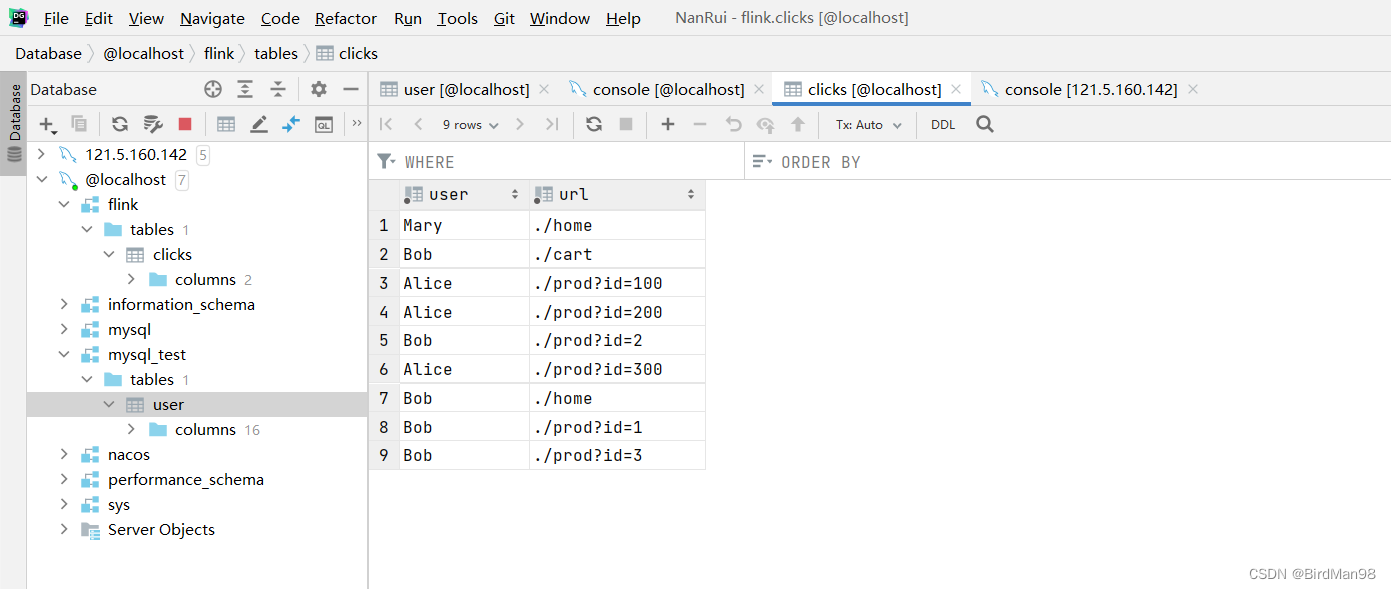MySQL Sink
在Flink流式数据处理中Sink常用的有Kafka,ES,MySQL,今天来看下,Flink中怎么使用JdbcSink将数据流写入MySQL中
配置
参考
POM
<!--mysql-->
<dependency>
<groupId>org.apache.flink</groupId>
<artifactId>flink-connector-jdbc_${scala.binary.version}</artifactId>
<version>${flink.version}</version>
</dependency>
<dependency>
<groupId>mysql</groupId>
<artifactId>mysql-connector-java</artifactId>
<version>8.0.29</version>
</dependency>
模拟一些数据,处理后写入MySQL
package org.example.flink.level2;
/**
* sink mysql
*/
import org.apache.flink.streaming.api.datastream.DataStreamSource;
import org.apache.flink.connector.jdbc.JdbcConnectionOptions;
import org.apache.flink.connector.jdbc.JdbcSink;
import org.apache.flink.streaming.api.environment.StreamExecutionEnvironment;
public class SinkToMySQL {
public static void main(String[] args) throws Exception {
StreamExecutionEnvironment env = StreamExecutionEnvironment.getExecutionEnvironment();
env.setParallelism(1);
DataStreamSource<Event> stream = env.fromElements(
new Event("Mary", "./home", 1000L),
new Event("Bob", "./cart", 2000L),
new Event("Alice", "./prod?id=100", 3000L),
new Event("Alice", "./prod?id=200", 3500L),
new Event("Bob", "./prod?id=2", 2500L),
new Event("Alice", "./prod?id=300", 3600L),
new Event("Bob", "./home", 3000L),
new Event("Bob", "./prod?id=1", 2300L),
new Event("Bob", "./prod?id=3", 3300L));
stream.addSink(
JdbcSink.sink(
"INSERT INTO clicks (user, url) VALUES (?, ?)",
(statement, r) -> {
statement.setString(1, r.user);
statement.setString(2, r.url);
},
new JdbcConnectionOptions.JdbcConnectionOptionsBuilder()
.withUrl("jdbc:mysql://localhost:3306/flink")
.withDriverName("com.mysql.cj.jdbc.Driver")
.withUsername("root")
.withPassword("root")
.build()
)
);
env.execute();
}
}
创建库表SQL
create database if not exists flink;
use flink;
drop table if exists clicks;
create table if not exists clicks(
user varchar(100) not null ,
url varchar(100) not null
);
执行代码后,数据库就会有数据了

























 7779
7779











 被折叠的 条评论
为什么被折叠?
被折叠的 条评论
为什么被折叠?










